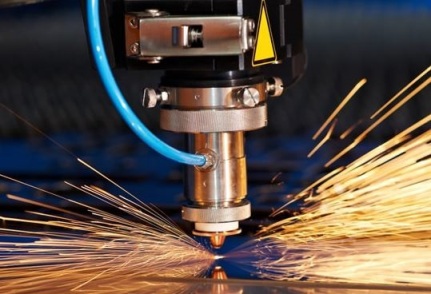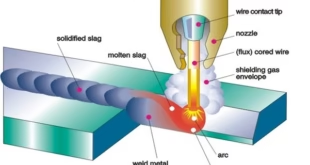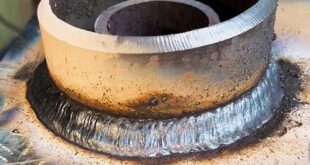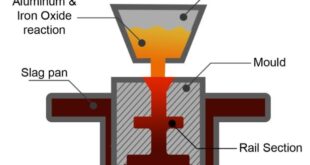Laser Welding
Introduction
Laser welding is a process that uses high-powered lasers to join materials together. It is a widely used technique in various industries, including aerospace, medical device manufacturing, automotive, and electronics manufacturing. Laser welding is a relatively new technology, with the first demonstration of a laser weld taking place in the 1960s. Since then, laser welding has become increasingly popular due to its many advantages, including high precision, reduced heat input, high welding speeds, and minimal distortion and shrinkage. One of the key benefits of laser welding is its ability to create high-quality welds with minimal defects. Laser welding relies on the use of a concentrated beam of light, which is precisely focused onto the workpiece. This allows for high levels of accuracy and precision, as well as the ability to weld very small and intricate components.

How Laser Welding Works
Laser welding is a complex process that relies on the precise delivery of a concentrated beam of light to create a strong and durable bond between two materials. At its core, laser welding relies on the principles of laser technology, which involves the use of a highly concentrated beam of light to create heat and energy. To begin the laser welding process, the laser beam is first directed onto the workpiece. The laser beam is typically created by a series of mirrors and lenses, which help to focus the beam onto a small area. This focused beam of light creates a localized area of high heat, which is used to melt the material and create the weld. Once the material has been melted, a filler material may be added to the weld in order to create a stronger and more durable bond. The filler material is typically added using a separate welding tool or through the use of a robotic arm, which is able to move the filler material into the weld area.
Applications of Laser Welding
Laser welding is a highly efficient and precise welding technique that uses a focused beam of laser light to melt and join two or more pieces of metal. Its high energy density allows for deep and narrow welds, making it an ideal choice for a wide range of industrial applications. Here are some of the major applications of laser welding:
- Automotive Industry: Laser welding is extensively used in the automotive industry for joining various car parts such as door panels, hoods, trunk lids, and fenders. It enables the production of lightweight and strong vehicles by creating precise and high-quality welds.
- Aerospace Industry: The aerospace industry heavily relies on laser welding for joining complex parts such as turbine blades, fuel nozzles, and other high-temperature materials. Laser welding ensures high accuracy and a high-quality finish while reducing the overall weight of the aircraft.
- Medical Industry: Laser welding is used in the medical industry for creating implantable devices such as pacemakers, surgical instruments, and orthopedic implants. It is also used for welding micro-sized components, making it an essential tool in the field of microelectronics.
- Electronics Industry: Laser welding is extensively used in the electronics industry for creating precision welds in electronic components such as sensors, connectors, and microcircuits. It is also used for repairing delicate electronic parts without damaging the surrounding area.
- Jewelry Industry: Laser welding is a preferred method for joining precious metals in the jewelry industry. It allows for precise and detailed work, enabling jewelers to create intricate designs without damaging the precious metal.
Advantages of Laser Welding
Laser welding is a modern welding technique that has become increasingly popular in various industries due to its many advantages. Here are some of the primary advantages of laser welding:
- High Precision: Laser welding produces precise and accurate welds due to its high energy density, allowing for minimal material distortion and a more refined finish.
- Fast Speeds: Laser welding is much faster than traditional welding methods, as it can produce high-quality welds in a matter of seconds.
- Narrow and Deep Welds: The laser beam can be focused to a small spot size, allowing for deep and narrow welds in tight and hard-to-reach areas.
- Minimal Heat Affected Zone: Laser welding produces minimal heat affected zones (HAZ), which means that the surrounding material is less likely to be affected by the heat of the welding process, resulting in less warping and distortion.
- Reduced Contamination: Laser welding produces clean welds with minimal contamination, as there is no need for filler materials or fluxes.
- Versatile: Laser welding can be used to weld a wide range of materials, including metals, plastics, and ceramics.
- High Efficiency: Laser welding is an efficient process that can be automated, reducing production times and costs.
- Safe and Environmentally Friendly: Laser welding is a safe and environmentally friendly process as it does not produce harmful fumes or radiation.
Disadvantages of Laser Welding
While laser welding offers many advantages over traditional welding methods, it also has some disadvantages. Here are some of the primary disadvantages of laser welding:
- Initial Costs: Laser welding equipment can be expensive to purchase and maintain, which can be a barrier for smaller businesses.
- Skilled Operators: Laser welding requires skilled operators to ensure the quality and consistency of the welds. The process may require additional training for operators, which can add to the overall costs.
- Limited Penetration Depth: The high energy density of laser welding can create a deep weld in some materials, but it is limited in its penetration depth for thicker materials, which may require multiple passes or a different welding method.
- Material Limitations: Laser welding may not be suitable for all materials, including materials with high reflectivity or those that are highly reactive to the laser beam.
- Sensitivity to Surface Conditions: Laser welding requires precise surface preparation, and any contaminants or irregularities on the surface can affect the quality of the weld.
- Safety Precautions: Laser welding produces high-intensity radiation, which can pose a risk to the operator’s eyes and skin. Appropriate safety precautions must be taken, including wearing protective gear and ensuring proper ventilation.
Comparison with Other Welding Processes
Laser welding is just one of many welding techniques used in modern manufacturing. Here are some comparisons of laser welding with other common welding processes:
- Gas Tungsten Arc Welding (GTAW/TIG): TIG welding is a manual welding process that uses a non-consumable tungsten electrode to produce an arc that melts the base material and a filler rod. TIG welding produces high-quality welds and is often used for thinner materials and critical welds, but it has disadvantage that it is slower and more labor-intensive than laser welding.
- Gas Metal Arc Welding (GMAW/MIG): MIG welding is an automated welding process that uses a consumable wire electrode and an inert gas to produce a weld. MIG welding is faster than TIG welding but produces lower-quality welds with more spatter.
- Resistance Spot Welding (RSW): RSW is a welding process that uses electrodes to apply pressure and current to produce a weld in sheet metal. RSW is a fast process, but it produces a less consistent weld than laser welding, and it is not suitable for thicker materials.
- Electron Beam Welding (EBW): EBW is a welding process that uses a high-energy beam of electrons to melt and join the base material. EBW produces high-quality welds with excellent penetration, but it is slower and more expensive than laser welding.
FAQs
What are the limitations of laser welding?
The limitations of laser welding include high equipment and maintenance costs, limited joint thickness, susceptibility to surface contamination, safety hazards associated with laser beams, and limitations in welding highly reflective materials.
Which laser is most efficient in welding?
The most efficient laser for welding depends on the specific application, but some commonly used lasers for welding include fiber lasers, CO2 lasers, and Nd:YAG lasers.
What are the capabilities of laser welding?
The capabilities of laser welding include high precision and accuracy, reduced heat input, high welding speeds, minimal distortion and shrinkage, and the ability to weld small and intricate components.
What is the efficiency of laser welding?
The efficiency of laser welding depends on various factors, such as the laser power, the welding speed, the material being welded, and the joint design. However, laser welding is generally considered to be a highly efficient process due to its ability to generate high-quality welds with minimal defects.
What is the temperature of laser welding?
The temperature of laser welding can range from several thousand degrees Celsius at the point of contact between the laser beam and the material being welded, to much lower temperatures in the surrounding areas.
Does laser welding produce heat?
Yes, laser welding produces heat through the use of a concentrated beam of light that is used to melt the material and create the weld.
What gas is used in laser welding?
The type of gas used in laser welding depends on the specific application, but commonly used gases include argon, helium, and nitrogen.
What wavelength is laser welding?
The wavelength used in laser welding depends on the type of laser being used, but commonly used wavelengths range from near-infrared to far-infrared.
Does laser welding use wire?
Yes, laser welding can use wire as a filler material to create stronger and more durable welds. This process is known as laser welding with wire feed.
What is laser cutting process?
Laser cutting involves using a focused beam of light to melt, burn, or vaporize materials, creating a clean and precise cut. The process is controlled by a computer program and can be used on a variety of materials, including metal, wood, and plastic.
Conclusion
Laser welding is a versatile and effective welding technique that offers many advantages over traditional welding methods. It is a precise, fast, and efficient process that can be used with a wide range of materials, making it ideal for many industrial applications. Despite its initial costs and requirements for skilled operators, laser welding offers several benefits, including minimal heat affected zones, reduced contamination, and reduced costs.
 Welding of Welders All about Welding and Welders
Welding of Welders All about Welding and Welders



